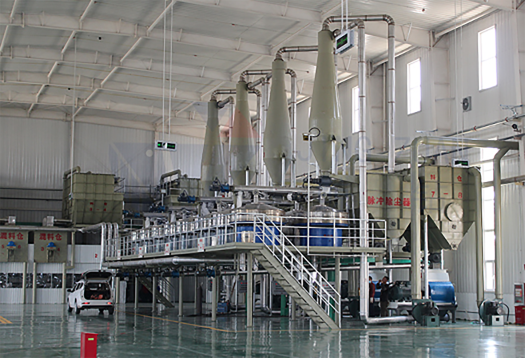
Nov . 08, 2024 07:12 Back to list
HPMC Production Facility for High-Quality Hydroxypropyl Methyl Cellulose Manufacturing
The HPMC Landscape An Insight into Hydroxypropyl Methylcellulose Manufacturing
Hydroxypropyl methylcellulose (HPMC) has become a pivotal ingredient across various industries, including pharmaceuticals, food, cosmetics, and construction. The increasing demand for sustainable and versatile polymers highlights the significance of HPMC, which is a modified cellulose derived from natural cellulose fibers. As we dive into the world of HPMC manufacturing, we unearth the intricate processes involved, the applications, and the future of this essential compound.
Understanding HPMC
HPMC is a non-ionic, cellulose-based polymer known for its excellent water retention, film-forming ability, and thickening properties. Its chemical structure comprises hydroxyl and methoxy groups, which enable it to dissolve in cold water, forming a viscous gel. This unique property makes HPMC a favored choice in both liquid and solid formulations.
Manufacturing Process
The production of HPMC involves several critical steps that require precision and quality control. The process begins with the sourcing of high-quality cellulose, often derived from wood pulp or cotton. The cellulose is then subjected to a series of chemical treatments to create hydroxypropyl groups and methyl groups.
1. Alkylation The first step involves the alkylation of cellulose, where the cellulose is reacted with propylene oxide and methyl chloride. This reaction introduces hydroxypropyl and methyl groups into the cellulose chain, creating the desired HPMC structure.
2. Purification After alkylation, the mixture is purified to remove any unreacted materials and by-products. This step is crucial to ensure that the final product meets the purity standards required for various applications, especially in pharmaceuticals.
3. Drying and Grinding Once purified, the HPMC is dried and ground into a fine powder. The particle size can be tailored according to the specific requirements of the end product, whether it be for pharmaceutical tablets or construction adhesives.
4. Quality Control Throughout the manufacturing process, rigorous quality control measures are in place to ensure that the HPMC meets industry standards. This includes testing for viscosity, degree of substitution, and solubility, among other parameters.
hpmc-hydroxypropyl methyl cellulose factory

Applications of HPMC
The versatility of HPMC allows it to be utilized across multiple sectors. In the pharmaceutical industry, it serves as a binder and film-coating agent for tablets and capsules. Its gelling properties also make it an ideal ingredient in topical formulations, providing sustained release of active ingredients.
In the food industry, HPMC acts as a thickener, emulsifier, and stabilizer. Its ability to retain moisture improves the texture and shelf life of various products, such as sauces, dressings, and baked goods.
The construction industry benefits from HPMC’s water retention properties when used in cement-based formulations. It enhances the workability and adhesion of mortars and plasters, making it an essential additive for modern construction materials.
Future Trends in HPMC Manufacturing
The growing emphasis on sustainability and eco-friendly products is shaping the future of HPMC manufacturing. Manufacturers are increasingly looking for renewable sources and efficient processes to minimize environmental impact. Advances in biotechnology may lead to the development of more sustainable methods of producing cellulose, further enhancing the green profile of HPMC.
Additionally, with the ongoing research and development in polymer science, we can expect to see innovations in HPMC formulations that cater to specific industry needs, such as tailored viscosity profiles for unique applications.
Conclusion
The manufacturing of Hydroxypropyl Methylcellulose represents a blend of traditional chemistry and modern innovation. As industries continue to evolve, the role of HPMC will only become more significant, driving advancements that emphasize efficiency, sustainability, and functionality. By understanding and enhancing the HPMC landscape, manufacturers can meet the growing demands of various sectors while maintaining the highest standards of quality and safety.
-
Versatile Hpmc Uses in Different Industries
NewsJun.19,2025
-
Redispersible Powder's Role in Enhancing Durability of Construction Products
NewsJun.19,2025
-
Hydroxyethyl Cellulose Applications Driving Green Industrial Processes
NewsJun.19,2025
-
Exploring Different Redispersible Polymer Powder
NewsJun.19,2025
-
Choosing the Right Mortar Bonding Agent
NewsJun.19,2025
-
Applications and Significance of China Hpmc in Modern Industries
NewsJun.19,2025







